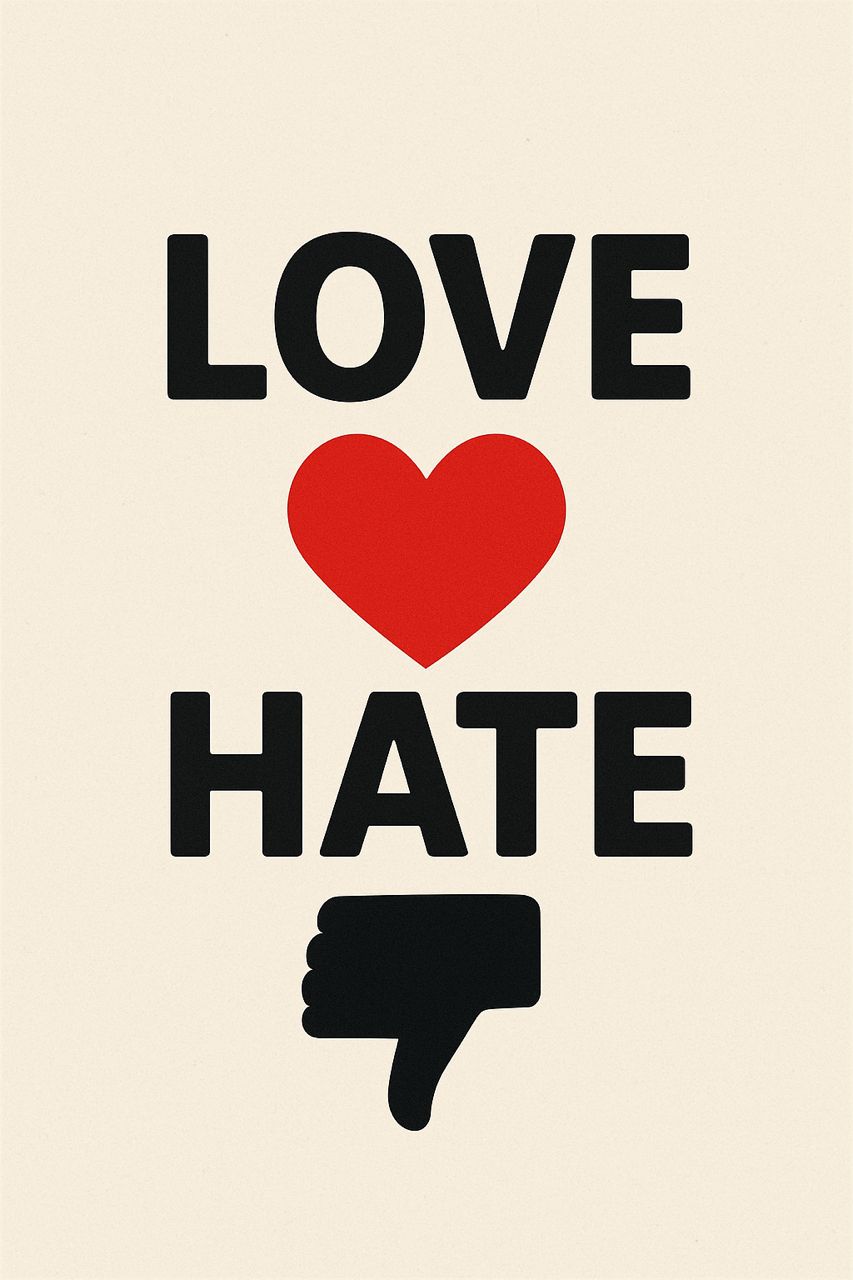By: QUEEN ADEPA MENDOZA Love and hate — two words that define the most fragile, powerful corners of the human experience. They sit on opposite end
By: QUEEN ADEPA MENDOZA
Love and hate — two words that define the most fragile, powerful corners of the human experience. They sit on opposite ends of emotion’s spectrum, yet are often separated by only a breath, a moment, or a single heartbreak.
From the outside, they couldn’t be more different. Love inspires poetry, builds homes, and ignites revolutions. Hate, in contrast, tears down, divides, and destroys. But psychologists say the two are not strangers at all — they’re siblings, born from the same place: passion. Both demand energy, attention, and the deep investment of one’s heart.
“People hate most intensely the things they once loved deeply,” says Dr. Evelyn Asare, a relationship therapist. “Because to hate, you must first care.”
It’s a paradox the world sees every day — lovers who turn into enemies, friends who stop speaking, nations that descend into conflict after years of unity. The same emotion that makes us human also makes us volatile. Love gives life meaning; hate, when it takes over, strips it away.
Yet in between the two lies something essential — choice. Whether in personal relationships or public life, humanity constantly faces the decision of which emotion to feed. In an age of social media outrage and deepening political divides, that choice has never been more urgent.
Still, love continues to prove its quiet resilience. We see it in a mother’s forgiveness after loss, in strangers helping during floods, in communities rebuilding after disaster. Love, unlike hate, requires strength — the strength to stay open when the world says to close off, to hope when it’s easier to harden.
Hate burns fast and bright. Love endures. And in the end, the story of humanity — from wars to weddings, from revolutions to reconciliations — has always been a story of these two forces colliding and coexisting.
Love and hate will never disappear. They are the fire and the frost of the human heart. But perhaps, in understanding how close they truly are, we can learn to choose the one that keeps us warm.
Love and hate — two emotions that seem worlds apart, yet often share the same beating heart. Both are born from passion, from the deep investment of the soul in something or someone that matters. Where there is love, the possibility of hate is never far behind; for what we love deeply has the power to wound us most.
Love builds, nurtures, forgives. It is patient, it gives meaning to sacrifice, and it binds people together even when the world tries to tear them apart. But when love is betrayed, neglected, or misunderstood, it can twist into something darker. Hate emerges not from indifference, but from pain — the ashes of love that once burned too brightly.
In relationships, nations, or faiths, this fragile boundary defines much of our humanity. Lovers turn into enemies, allies into rivals, believers into cynics. And yet, both love and hate remind us of our capacity to feel — to care deeply, to hope, and to hurt.
To love in a world that so easily breeds hate is an act of courage. It requires strength not to let bitterness consume the heart. For while hate blinds and destroys, love restores sight — it heals what anger fractures and opens the door to redemption.
The truth is simple but hard to live: love and hate are mirrors. One reflects what we give, the other what we lose. And in choosing love, again and again, we choose to remain human.
